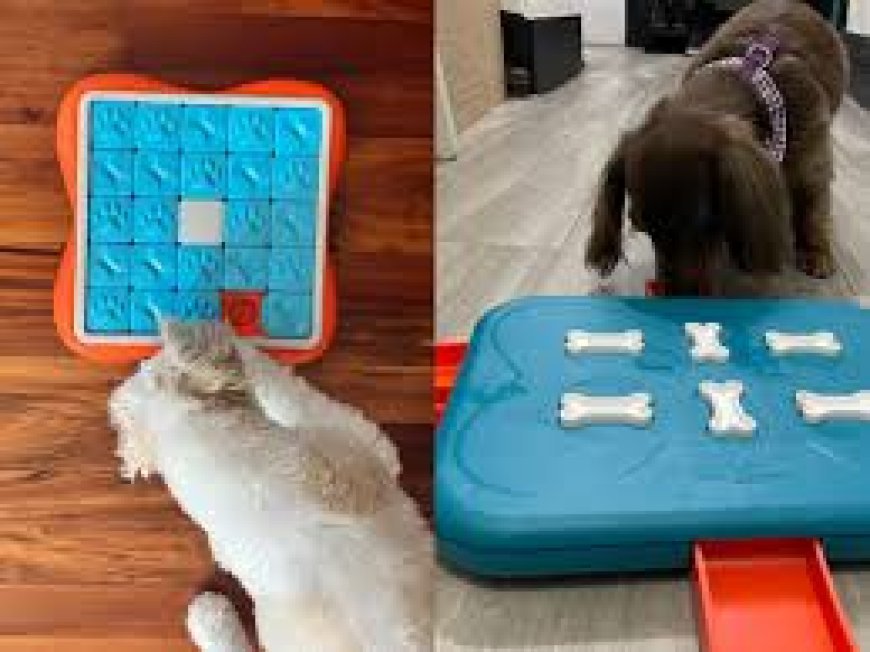The Complete Guide to Dog Chew Toys: Keeping Your Pup Happy and Your Furniture Safe

Every dog owner knows the struggle. You come home to find your favorite shoes turned into confetti, or worse, your couch cushions redistributed across the living room. Dogs need to chew – it's hardwired into their DNA. The good news is that with the right chew toys, you can redirect that natural instinct into something positive for both you and your furry friend.
Why Dogs Need to Chew
Chewing isn't just a puppy phase that dogs grow out of. Adult dogs chew for multiple reasons: stress relief, boredom, dental health, and pure enjoyment. Puppies chew even more as they're teething, which can be uncomfortable and painful. When you provide appropriate chew toys, you're not just saving your belongings – you're supporting your dog's mental and physical wellbeing.
Think of chewing as your dog's version of meditation or stress relief. Just like humans might fidget with a pen or chew gum when thinking, dogs use chewing to self-soothe and work through anxiety or excess energy.
Types of Chew Toys That Actually Work
Rubber Chew Toys Durable rubber toys like Kong classics have earned their reputation for good reason. They're tough enough for aggressive chewers but gentle enough not to damage teeth. Many can be stuffed with treats or peanut butter, turning chew time into puzzle-solving time. The key is choosing the right hardness level for your dog's chewing intensity.
Natural Chews Bully sticks, antlers, and rawhide alternatives offer the satisfying experience dogs crave. However, quality matters enormously here. Look for single-ingredient options from reputable sources. Antlers should be split (not whole) to prevent tooth damage, and always supervise your dog with any natural chew.
Rope Toys Cotton rope toys satisfy dogs who like to shred and tear. They're relatively safe when supervised, and the cotton fibers can even help clean teeth as your dog chews. Just watch for excessive unraveling – you don't want your dog swallowing long strings.
Puzzle Chew Toys These combine mental stimulation with the physical act of chewing. Toys that dispense treats as your dog works on them keep minds engaged while satisfying the urge to chew. They're particularly helpful for smart breeds that need extra mental challenges.
Choosing the Right Chew Toy for Your Dog
Size matters more than you might think. A toy that's too small poses a choking hazard, while one that's too large might discourage your dog from engaging with it. A good rule of thumb: the toy should be large enough that your dog can't swallow it whole, but small enough to comfortably hold and manipulate.
Consider your dog's chewing style too. Some dogs are gentle nibblers who enjoy softer textures, while others are power chewers who can destroy seemingly indestructible toys in minutes. Heavy chewers need extremely durable options – think thick rubber or specially designed tough toys. Light chewers can enjoy a wider variety, including plush toys with squeakers.
Age plays a role as well. Senior dogs might prefer softer options that are easier on aging teeth and gums, while young adult dogs often have the strongest, most destructive chewing habits.
Safety First: What to Watch Out For
Not all chew toys are created equal, and some popular options can actually be dangerous. Cooked bones should never be given to dogs – they splinter and can cause serious internal injuries. Ice cubes might seem harmless, but they can crack teeth. Tennis balls, while beloved by many dogs, can wear down tooth enamel with excessive use.
Always inspect chew toys regularly. Even the toughest toys eventually wear down and can develop sharp edges or small pieces that could break off. When a toy starts showing significant wear, it's time to replace it.
Supervision is crucial, especially when introducing new chew toys. Watch how your dog interacts with different materials and textures. Some dogs try to swallow large pieces, while others are content to gnaw safely for hours.
Making Chew Toys More Appealing
Sometimes dogs ignore perfectly good chew toys in favor of your belongings. This usually happens because your stuff smells like you, making it more interesting than a plain rubber toy. You can make chew toys more appealing by rubbing them with a small amount of chicken broth or peanut butter before giving them to your dog.
Rotating toys also helps maintain interest. Instead of leaving all toys out all the time, keep some stored away and swap them out weekly. This makes old toys feel new again and prevents boredom.
The Economic Reality of Chew Toys
Quality chew toys aren't cheap, but they're definitely cheaper than replacing furniture, shoes, or dealing with emergency vet bills from dogs eating inappropriate items. Think of them as an investment in your peace of mind and your dog's health.
That said, you don't need to break the bank. Some of the best chew toys are simple and affordable. A frozen Kong stuffed with your dog's regular food can provide hours of entertainment and costs just a few dollars.
Training Your Dog to Use Chew Toys
Simply providing chew toys isn't always enough – you might need to actively teach your dog to use them. When you catch your dog chewing something inappropriate, redirect them to an approved chew toy immediately. Praise them enthusiastically when they engage with the right item.
Consistency is key. Everyone in your household needs to follow the same rules and redirect inappropriate chewing the same way. Mixed messages confuse dogs and slow down the training process.
Signs You've Found the Right Chew Toy
You'll know you've hit the jackpot when your dog consistently chooses their chew toys over your belongings. They should seem genuinely engaged and relaxed while chewing, not frustrated or disinterested. The toy should show appropriate wear over time – enough to indicate regular use, but not so much that it becomes unsafe.
The right chew toy can transform a destructive dog into a content one. It's worth experimenting with different types and brands to find what works best for your specific dog. Remember, what works for one dog might not work for another, even within the same breed or household.
For more insights on choosing the perfect chew toys and other pet care essentials, LifeGizmoHub offers comprehensive reviews and recommendations to help you make the best choices for your furry family members.
What's Your Reaction?























































